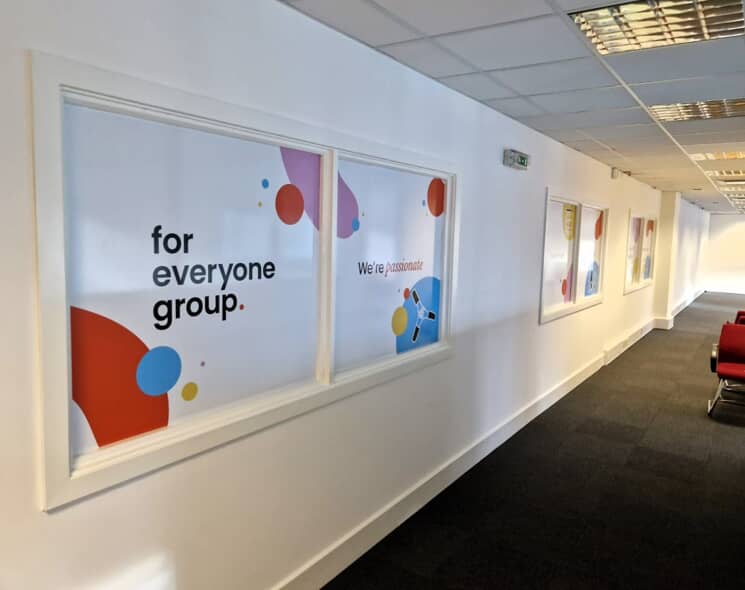In today’s fast-paced and online 24/7 world where we’re all constantly bombarded with visual information, it might seem like the traditional shopfront sign has lost some of its power. But this is far from the case.
A well-designed sign can be your secret weapon in standing out from the crowd, a powerful tool for grabbing your customers’ attention, influencing their behaviour, and creating the lasting brand experience your business needs to thrive.
Understanding the psychology behind what makes a great sign can be the difference between your business really connecting with your target audience and one that just blends into the background barely noticed. Until it eventually disappears altogether.

How To Grab Your Customers’ Attention
Our human attention span is notoriously short. Studies suggest it's around eight seconds, which means you have a limited window to make an impression.
And this is where knowing the psychology of good signage comes into play.
These are some of the most important things you’ll want to think about:
- Colour Psychology: Colours both connect with our emotions and have a significant impact on how we process information. Bold, contrasting colours like red and yellow naturally grab attention, whereas calming blues or greens can be great to create a sense of trust. Choosing the right colours for your brand and message is crucial.
- The Right Size: A sign that's too small will be easily missed, while one that seems too big for its surroundings will overpower your customers. Your ideal sign should strike the right balance between visibility and aesthetics, taking into account the location and likely viewing distance.
- Simplicity is Key: People process visuals quickly. Avoid cluttering your sign with too much text and avoid too many intricate designs. Don’t try to be too clever. Focus instead on a clear, concise message that everyone will understand on first glance.
- Movement and Animation: Dynamic elements like flashing lights, moving graphics and digital displays can really help you capture your customers’ attention. However, use them sparingly, as too much of a good thing can be overwhelming or just look downright tacky.

And Once You’ve Got Their Attention…
A well-designed sign doesn't just grab attention for the sake of it: it aims to subtly shape consumer behaviour that will result in sales.
Here's how your signage should do this:
- Clarity is King: A clear, concise message is essential for guiding customers to take the action you want them to take. Use easy-to-read fonts, appropriate text size and avoid all unnecessary jargon.
- Directional Cues: Effectively guide customers with clear directional signage. Arrows, words, symbols and the careful positioning of signs can customers circulate around your shop or showroom to get them to where you need them to be.
- Emotional Connection: Signage can evoke the right emotions in your customers through imagery and messaging. A picture showing an enticing flat white might nudge your customers to pit stop in your instore cafe, whilst clean, clear, minimalist signage can help reinforce the on-trend, sophisticated image you want customers to associate with your fashion lines.

How Signs Can Create a Memorable Brand Experience
Effective commercial signage is never just about delivering basic information. It is about that, but it's also about creating a memorable brand experience.
These are some factors you should bear in mind:
- Brand Consistency: Your signage should visually echo your established brand identity. Use consistent fonts, colours, and logos across all signage to create a cohesive and recognisable brand image.
- Uniqueness and Creativity: A distinctive sign that stands out from the crowd can leave a lasting impression in potential customers’ minds. Consider incorporating unique design elements or a creative tagline to make your brand memorable.
- Aesthetics Matter: Signage is an important reflection of your brand's personality and helps to reinforce it. A modern, sleek sign might suit a technology company, while a rustic, hand-painted sign might be perfect for a bakery. Ensure your signage's aesthetics align with your business’ purpose and your brand image.
Why Work with a Professional Sign Maker?
Although DIY signage might seem like a cost-effective option, it is likely to prove a false economy. Working with a professional sign maker like FASTSIGNS will have numerous advantages for your business:
- Expertise in Legality and Regulations: Signage regulations can be complex, varying by location and industry. A professional sign maker can ensure that your signage complies with all regulations, saving you a heap of potential trouble further down the line.
- Material Selection and Durability: Professional sign makers understand the best materials for different locations and weather conditions. This ensures your new sign is not only attractive when you install it but remains so for years to come.
- Design Expertise: Creating a visually compelling and effective sign requires design expertise. A professional can help you translate your brand vision into a captivating design that successfully aligns with the psychology of good signage.
- Installation and Maintenance: Professional sign makers have the experience and equipment to install your signage safely and correctly. They can also offer maintenance services to ensure your sign remains vibrant and effective.

Effective signage is much more than just a means to publicly display basic information about your business. It's a powerful marketing tool.
By understanding the psychology behind good signage and calling on the expertise of professionals, your businesses can create a sign that will grab attention, influence customer behaviour and create a positive experience of your brand.